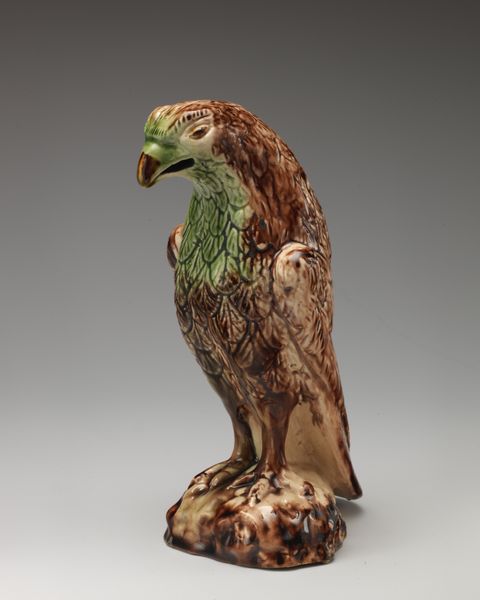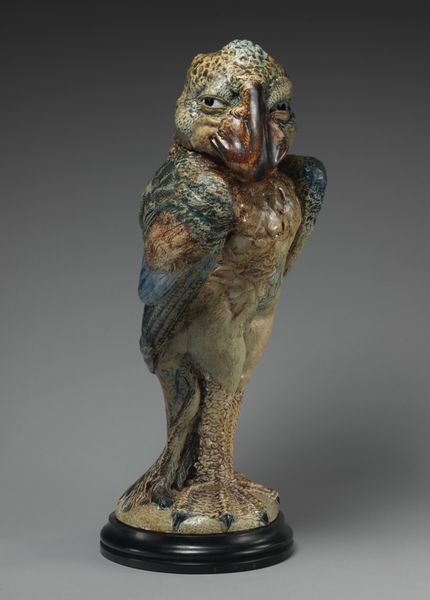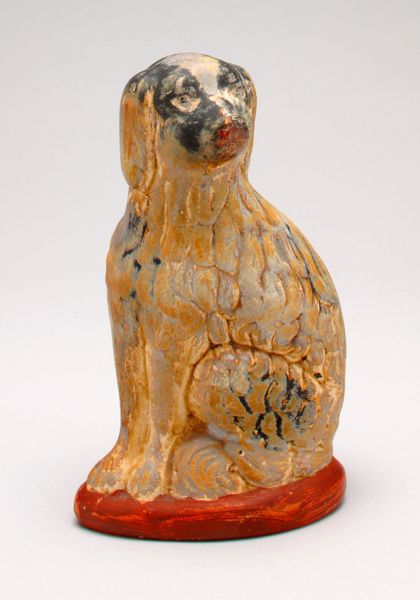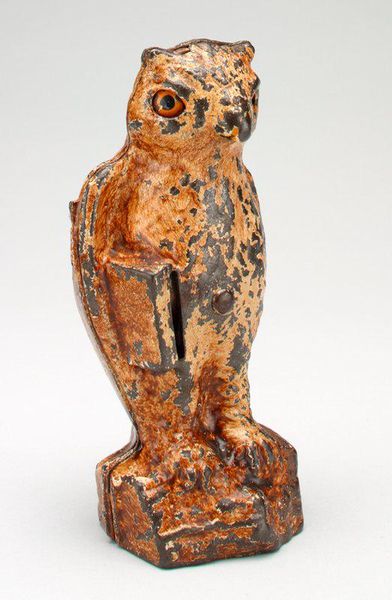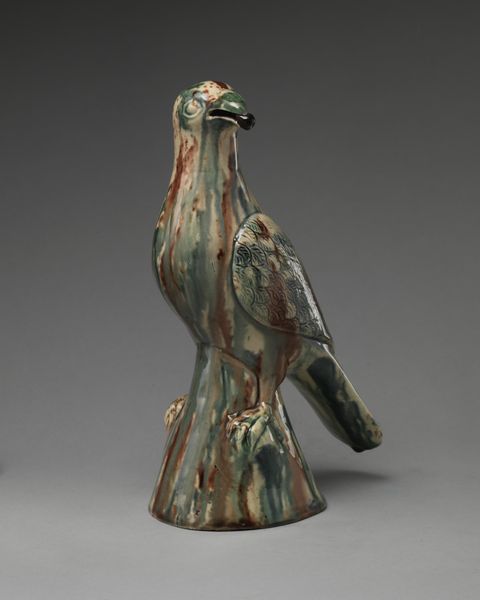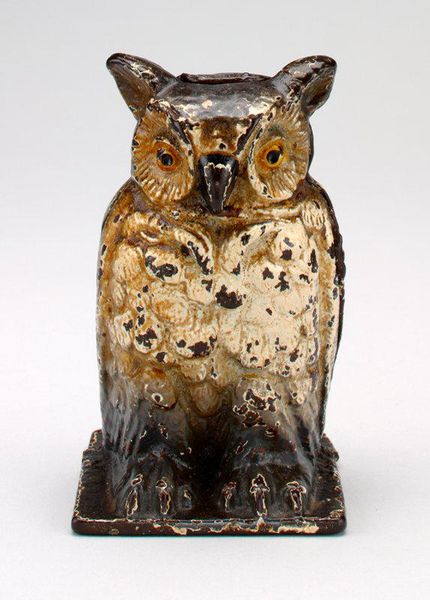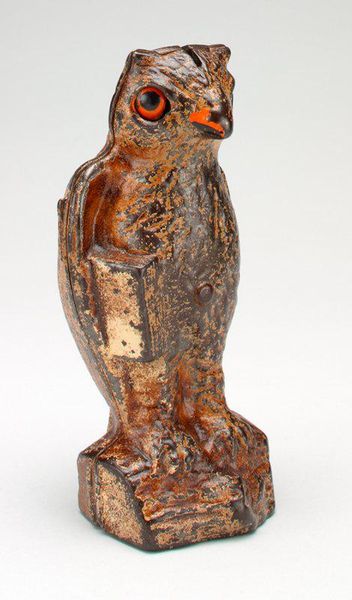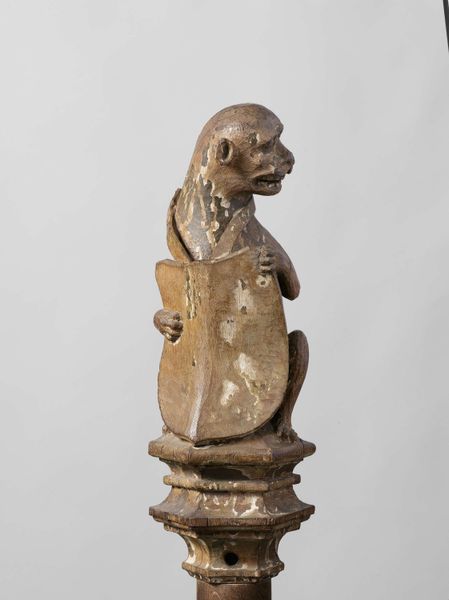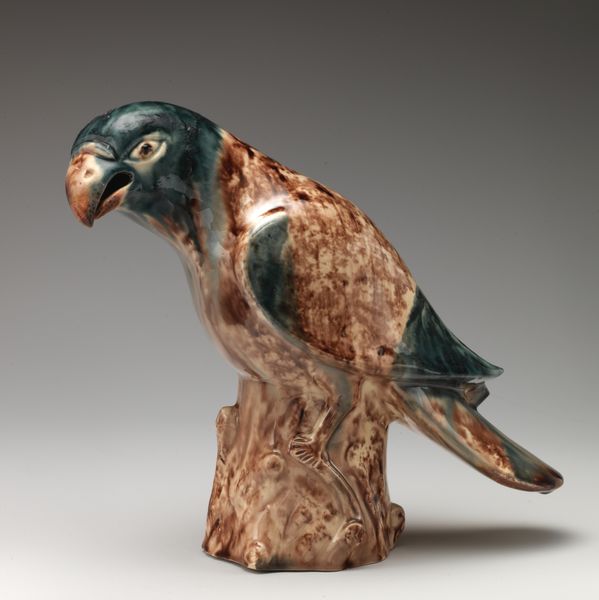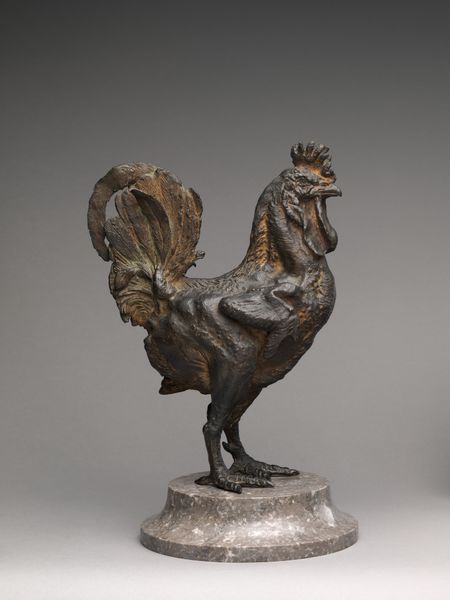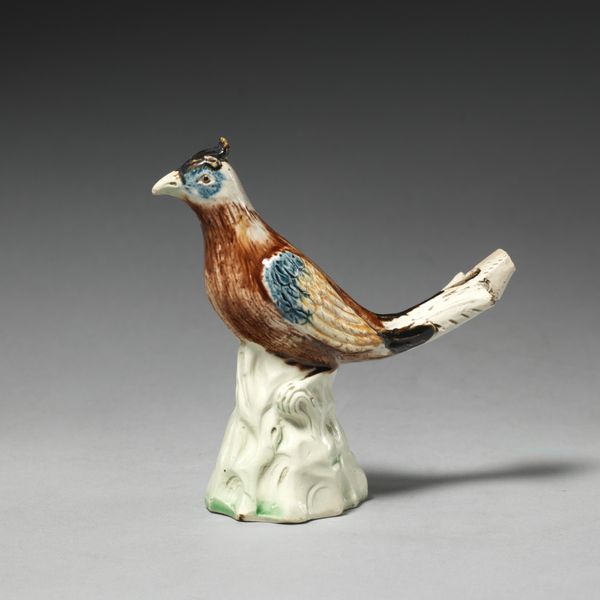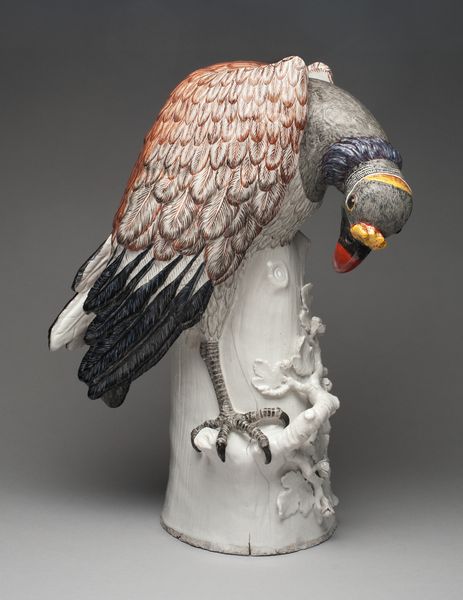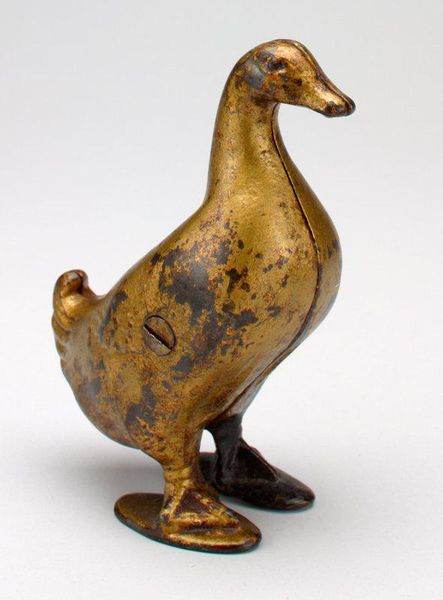
assemblage, ceramic, sculpture, wood
#
assemblage
#
ceramic
#
bird
#
sculpture
#
wood
Dimensions: Overall (confirmed, on socle): 12 3/16 × 6 7/16 × 6 7/16 in., 6 lb. [body (a) 4 lb., head (b) 2 lb.] (31 × 16.4 × 16.4 cm, 2.7 kg)
Copyright: Public Domain
Curator: Looking at this artwork, titled "Jar in the Form of a Bird," made around 1888 by R. W. Martin and Brothers, what's your immediate impression? Editor: It has a sort of whimsical, unsettling quality. The ceramic is beautifully rendered, but the bird’s expression—almost comically grave—creates this strange tension. The posture appears formal, perched as it is on what looks to be a wooden plinth. What do we know about this jar’s place in society at the time? Curator: Martin Brothers emerged as a pottery studio during the British Arts and Crafts movement. Think of the context: Industrialization was rapidly changing England, leading to a rise of artistic collectives pushing back against mass production and embracing artisanal craftsmanship. Their creations, including pieces like this one now housed at the Metropolitan Museum of Art, were displayed at galleries, tapping into anxieties around industrial labor, aesthetics, and naturalism. Editor: Exactly. I wonder if the "grotesque" features of this jar serve as a critique of societal "types". Notice the exaggerated features— the droopy eyes, the rather large beak. Are we seeing a caricature, perhaps a satire on the elite of the Victorian era? This was also a period defined by natural sciences, taxonomy, and museums’ growth. Did those intellectual movements inform Martin Brothers' whimsical rendering of animals? Curator: Undoubtedly. There was a cultural fascination with the natural world, often filtered through the lens of scientific inquiry and exploration. They even referenced archaeological discoveries like the Dodo! This ceramic piece serves both a functional and symbolic role. They become curious vessels that tap into socio-cultural themes and invite discussion. Editor: So, it becomes more than just a decorative jar—it becomes a statement. It prompts questions about how we classify, control, and ultimately, perceive both nature and each other. It speaks to the Victorian era’s anxieties and their obsession with categorizing lifeforms. Curator: Precisely. And even now, gazing into its melancholic gaze, one is drawn into reflecting on art, society, and its enduring power. Editor: A poignant piece that makes one consider how much of human anxieties and cultural tensions travel through generations.
Comments
No comments
Be the first to comment and join the conversation on the ultimate creative platform.
